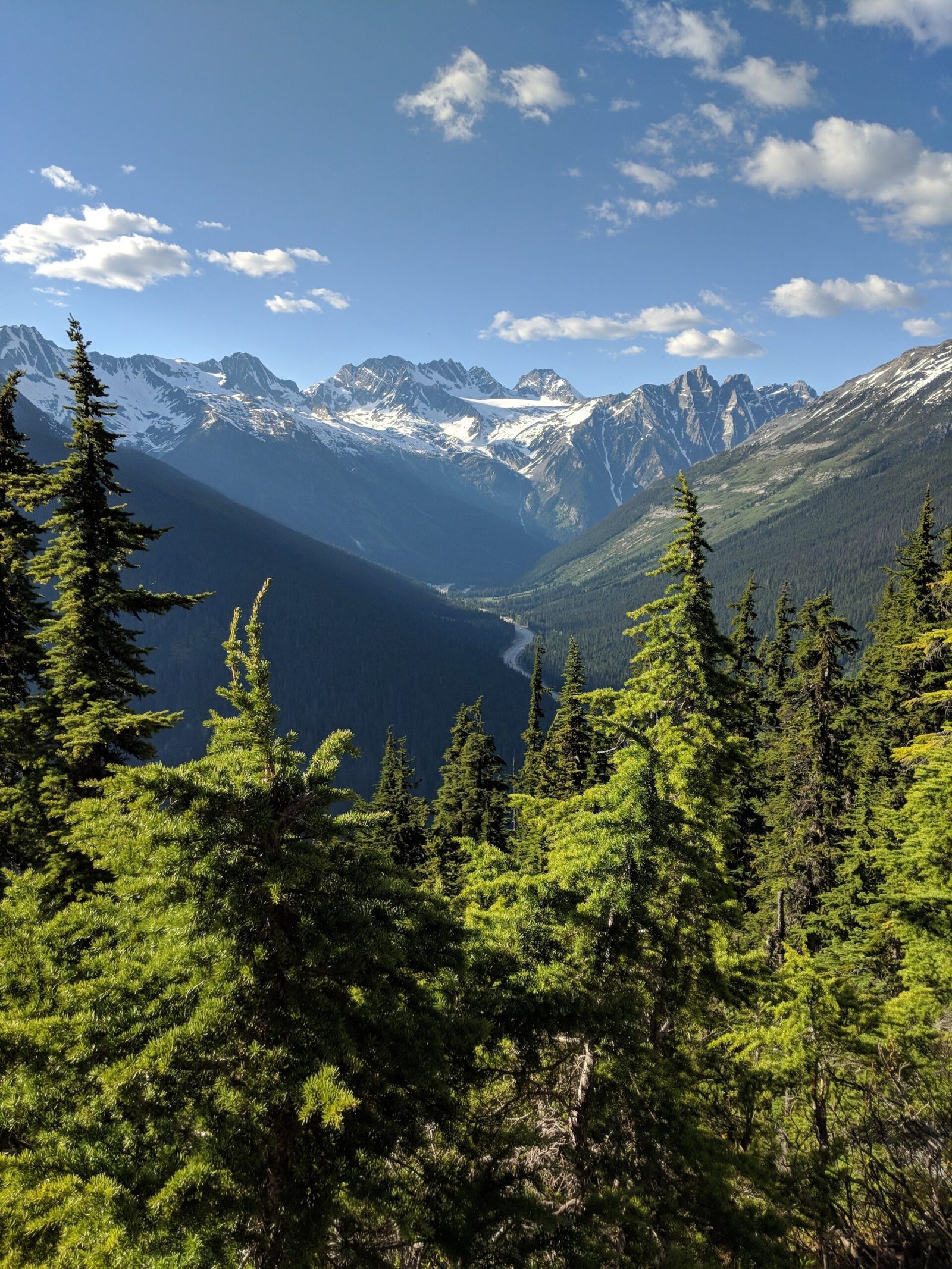Slide Lake Campground in Glacier National Park is a remote backcountry site offering a true wilderness experience. Located in the park’s rugged interior, this campground provides access to pristine alpine landscapes, challenging hiking trails, and serene fishing opportunities. With limited amenities and no road access, Slide Lake Campground is ideal for experienced backpackers seeking solitude and immersion in Glacier’s untamed beauty.
What amenities are available at Slide Lake Campground?

Slide Lake Campground, being a backcountry site, offers minimal amenities:
- Restroom Facilities: Vault toilets are likely available, typical for backcountry sites in Glacier National Park.
- Camping Areas: Designated spots for pitching tents and preparing meals.
- Water Source: Natural water from Slide Lake or nearby streams (requires treatment).
It’s important to note that there are:
– No flush toilets or showers
– No potable water sources
– No picnic tables or fire rings
Campers must be self-sufficient and practice Leave No Trace principles.
How can I make reservations for Slide Lake Campground?

Reserving a spot at Slide Lake Campground involves the following process:
- Backcountry Permit System: Reservations are made through Glacier National Park’s backcountry permit system.
- Itinerary Submission: Submit a detailed itinerary of your planned route and camping locations.
- Booking Platforms:
- Online through the park’s official website
- In-person at the park’s backcountry office
- Reservation Costs: A fee is associated with obtaining a backcountry permit (exact cost not specified).
- Cancellation Policies: Managed by the park’s backcountry office; contact them directly for details.
It’s advisable to plan and book well in advance, especially for peak summer months.
What hiking trails can I access from Slide Lake Campground?
Slide Lake Campground serves as a gateway to several challenging backcountry trails:
- Lee Ridge Trail:
- A popular route to access Slide Lake
- Multi-day backpacking trip
-
Offers panoramic views of the surrounding wilderness
-
Slide Lake to Upper Kintla Lake Trail:
- Connects two remote alpine lakes
-
Traverses rugged mountain terrain
-
Slide Lake to Snyder Lake Trail:
- Links two backcountry campgrounds
- Passes through diverse ecosystems
| Trail | Difficulty | Approximate Length | Key Features |
|---|---|---|---|
| Lee Ridge to Slide Lake | Challenging | Multi-day | Alpine vistas, steep descents |
| Slide to Upper Kintla Lake | Strenuous | 1-2 days | Lake views, mountain passes |
| Slide to Snyder Lake | Moderate to Difficult | 1 day | Varied terrain, forest and lake scenery |
Note: Exact trail lengths and difficulty ratings may vary; always check current park information before embarking on a hike.
What are the fishing opportunities at Slide Lake?
Slide Lake offers a unique fishing experience in a remote alpine setting:
Fish Species
While specific fish populations in Slide Lake are not detailed in available sources, Glacier National Park is known for:
– Cutthroat Trout
– Brook Trout
– Lake Trout
Fishing Regulations
- License Requirement: A valid Montana fishing license is mandatory.
- Park-Specific Rules:
- Catch limits may apply
- Gear restrictions might be in place
- Check with park authorities for current regulations
Best Fishing Seasons
- Late spring to early fall (typically June to September)
- Dependent on weather conditions and lake accessibility
Fishing Tips
- Use lightweight, packable fishing gear suitable for backpacking
- Practice catch-and-release to preserve fish populations
- Be prepared for variable weather conditions
What should I pack for a stay at Slide Lake Campground?
Given the remote nature of Slide Lake Campground, thorough preparation is crucial:
- Camping Gear:
- Lightweight tent
- Sleeping bag rated for cold temperatures
- Sleeping pad for insulation
-
Backpacking stove and fuel
-
Water Treatment:
- Water filter or purification tablets
-
Containers for carrying water
-
Food and Storage:
- Lightweight, high-energy foods
-
Bear-resistant food container (required in Glacier National Park)
-
Clothing:
- Layered clothing for variable temperatures
- Rain gear
-
Sturdy hiking boots
-
Navigation and Safety:
- Topographic map and compass
- First aid kit
-
Emergency communication device (satellite phone or personal locator beacon)
-
Other Essentials:
- Headlamp or flashlight
- Sun protection (hat, sunscreen, sunglasses)
- Insect repellent
- Biodegradable soap and hand sanitizer
Remember to pack out all trash and follow Leave No Trace principles to preserve the wilderness.
How do I prepare for wildlife encounters at Slide Lake Campground?
Slide Lake Campground is situated in prime wildlife habitat, necessitating proper preparation:
Bear Safety
- Food Storage: Use bear-resistant containers for all food, trash, and scented items.
- Cooking Area: Establish a cooking area at least 100 yards from your tent.
- Bear Spray: Carry bear spray and know how to use it.
- Noise: Make noise while hiking to avoid surprising bears.
Other Wildlife Precautions
- Store food properly to avoid attracting smaller animals like rodents.
- Observe wildlife from a distance; never feed or approach animals.
- Learn to identify signs of wildlife presence.
Wildlife You Might Encounter
- Grizzly and Black Bears
- Mountain Goats
- Bighorn Sheep
- Elk
- Moose
- Various bird species
What is the best time to visit Slide Lake Campground?
The optimal time to visit Slide Lake Campground depends on various factors:
Summer (July to August)
- Pros:
- Warmest temperatures
- Most trails are snow-free
- Longest daylight hours
- Cons:
- Busiest season
- More competition for backcountry permits
Early Fall (September)
- Pros:
- Fewer crowds
- Beautiful fall colors
- Potential for wildlife sightings
- Cons:
- Cooler temperatures
- Possibility of early snow
Late Spring/Early Summer (June)
- Pros:
- Wildflowers begin to bloom
- Fewer visitors than peak summer
- Cons:
- Some trails may still have snow
- Higher water levels in streams and rivers
Note: Slide Lake Campground is typically inaccessible in winter due to snow and extreme conditions.
Always check current park conditions and trail status before planning your trip, as weather can significantly impact accessibility and safety in this remote area.